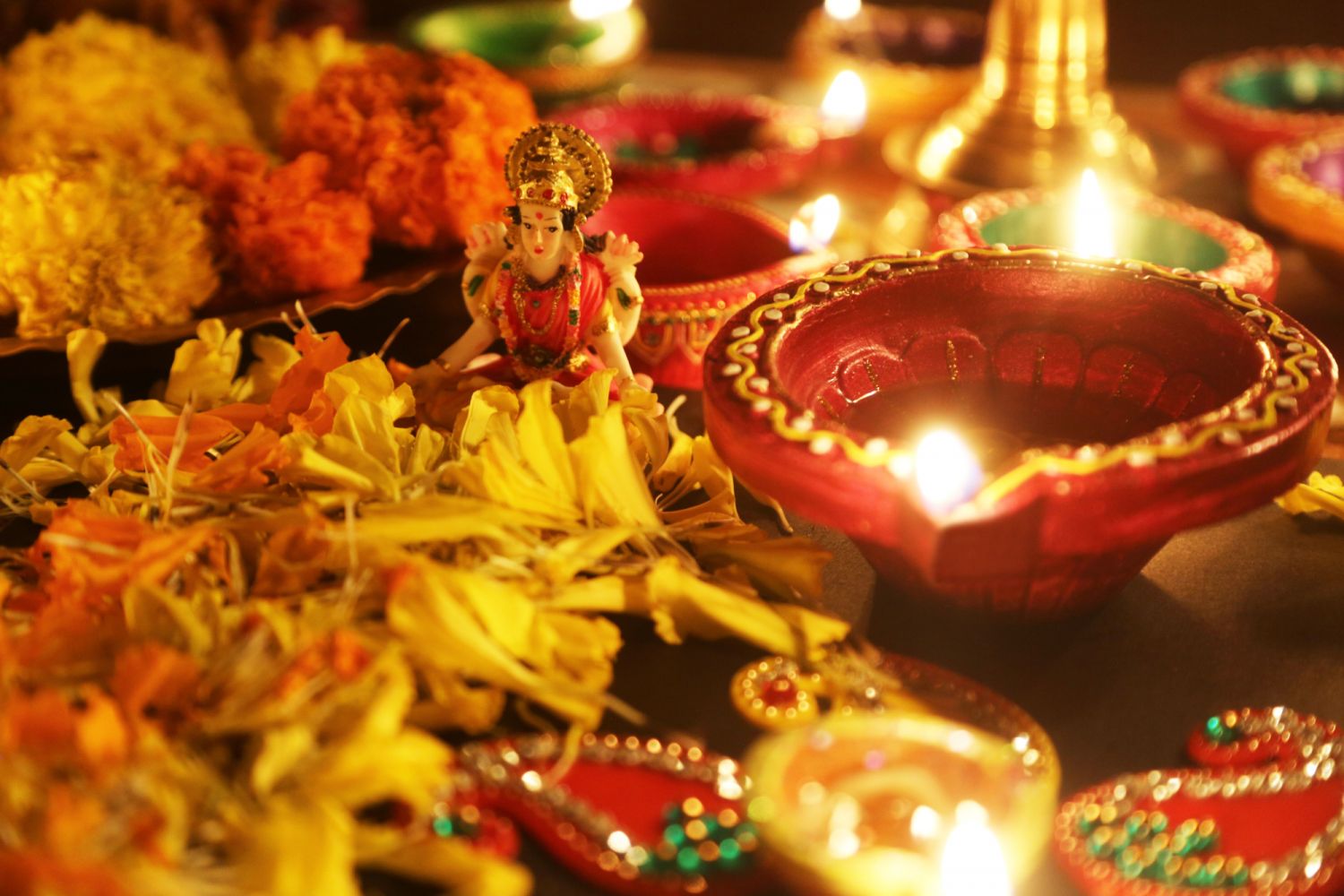Kickstarting Diwali with gold jewellery purchases has been a tradition that is widely observed by South Asians worldwide. We dig deeper into where the practice began and how buying jewellery has evolved
People all around the world buy jewellery when celebrating Diwali, the festival of light. The first day of Diwali, observed on the 13th day of the eighth month of the Hindu calendar, has long been considered an auspicious time to buy gold in particular, thanks to an ancient legend, but new trends are emerging among younger South Asians who are stepping away from tradition.
As the story goes, there was once a young prince whose death by snakebite was augured to take place four days after his wedding day. Upon learning of her husband’s predicament, his new bride forbade the prince from getting any rest the night before the prophesied death by decorating their sleeping chamber with jewellery, gold coins and silver items, and flooding the palace with lamplight and singing.
The god of death, taking the form of a serpent, was so blinded by the treasures on display that the prince escaped his misfortune unscathed. As a result, South Asians celebrate the start of Diwali by investing in their own dazzling trinkets on a considerable scale: last year’s sales in India totalled 50 tonnes, according to the India Bullion and Jewellers Association.
See also: Why Is the Kohinoor Diamond, Inherited by Queen Consort Camilla, So Controversial?

The custom of buying gold is adhered to by East Asia’s large South Asian population, for whom wearing expensive jewellery is a way to make a fashionable statement at large-scale Diwali functions, such as balls, so there are a number of jewellers in the region who cater to the tradition.
Niyati Kapadia moved to Hong Kong from India 17 years ago and founded Niya K, a bespoke fine jewellery boutique, in 2015. She reports that her average customer makes a minimum investment of about HK$20,000 (US$2,500) each Diwali, but some are willing to spend more than HK$500,000. Kapadia offers a ready- to-wear collection, but as is tradition, nearly all pieces sold around Diwali are custom-made—even customers with smaller budgets look for bespoke pieces.
Despite the widespread economic downturn that has accompanied the pandemic, Kapadia has noticed that when it comes to luxury purchases, spending has been unaffected, or even increased. “I definitely saw a trend of bigger budgets from customers during Covid,” she says. “Because [they] haven’t gone to restaurants or travelled as much, they have [more] disposable income.”


